Golden Wattle
- November 24, 2023
- 0 comment
The golden wattle, also known as Acacia pycnantha, is a captivating shrub or small tree native to southeastern Australia. Its name aptly captures its defining feature – a profusion of radiant, golden-colored flowers that adorn its branches during late winter and early spring. These fragrant blooms not only add a splash of brilliance to the landscape but also serve as a nectar source for various pollinators, including honeyeaters and thornbills.
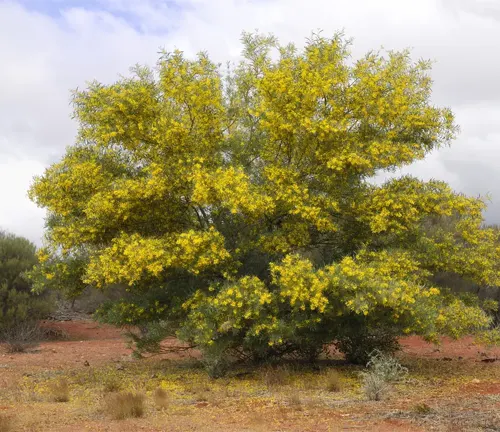
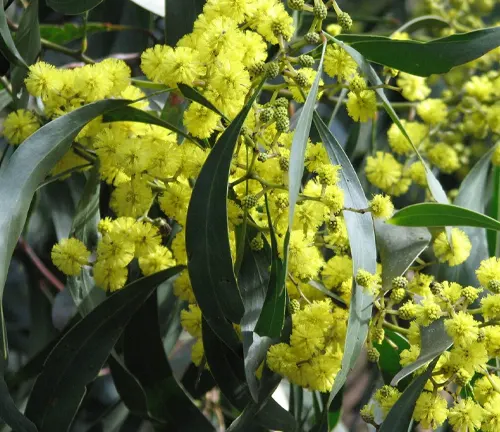
Beyond its aesthetic appeal, the golden wattle possesses a range of practical applications. Its phyllodes, flattened leaf stalks that replace true leaves, are rich in tannins, making it a valuable source of tanbark for leather production. The bark itself has medicinal properties and has been used traditionally to treat skin ailments.
The golden wattle’s adaptability to diverse soil types and its ability to withstand both frost and dry periods make it a versatile choice for landscaping and conservation projects. It serves as an effective windbreak, protecting smaller plants from harsh winds, and its roots play a crucial role in preventing soil erosion.
In addition to its ecological benefits, the golden wattle holds cultural significance for Australia. In 1991, it was officially designated as the nation’s floral emblem, a testament to its beauty, resilience, and symbolic representation of the Australian spirit.
| Characteristic | Description |
|---|---|
| Scientific Name | Acacia pycnantha |
| Family | Fabaceae |
| Common Name | Golden Wattle |
| Habitat | Southeastern regions of Australia |
| Foliage | Evergreen with feathery, blue-green leaves |
| Flowers | Bright golden-yellow, spherical clusters |
| Blooming Period | Typically in late winter to early spring |
| Size | Medium-sized shrub, ranging from 2 to 8 meters in height |
| Soil Preference | Adaptable, grows well in various soil types, including clay and sandy loam |
| Cultural Significance | National floral emblem of Australia, symbolizing unity and resilience |
| Uses | Traditional uses by Indigenous Australians for food, medicine, and tools |
| Ecological Role | Supports biodiversity, provides habitat for insects and birds |
| Symbolism | Emblematic of Australia’s natural heritage, resilience, and the spirit of the nation |
| Other | Named after the Greek word “akakia,” highlighting its thorny nature |
Botanical Beauty of Golden Wattle
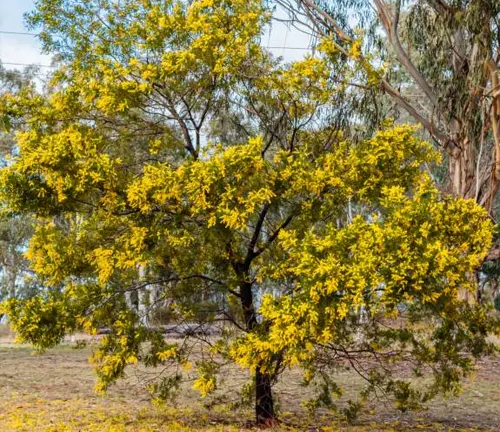
In the heart of Australia’s diverse flora, the Golden Wattle, scientifically known as Acacia pycnantha, emerges as a botanical masterpiece. This medium-sized evergreen shrub, adorned with feathery blue-green leaves, captivates onlookers with its spectacular golden-yellow blossoms. The scientific precision of its name, derived from the Greek word “akakia,” highlights its thorny nature, while its vibrant blooms symbolize resilience and unity. Beyond its national emblem status, the Golden Wattle stands as a testament to the country’s rich botanical diversity and intrinsic beauty.
Woodland Elegance
Nestled in the woodland regions of southeastern Australia, the Golden Wattle graces the landscape with woodland elegance. Its graceful branches sway in the breeze, creating a picturesque scene. The feathery foliage, combined with the luminous clusters of golden flowers, adds a touch of elegance to the woodlands. As a medium-sized shrub, it strikes a harmonious balance between subtlety and prominence, making it a defining feature of Australia’s natural scenery.
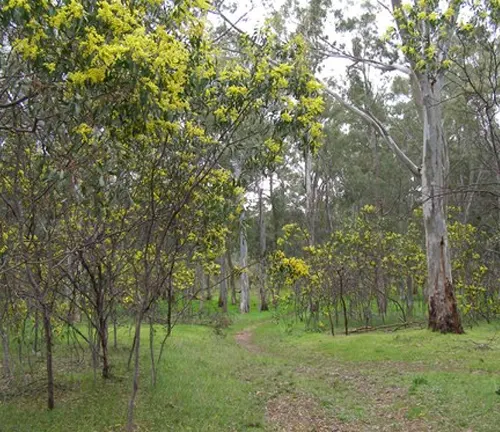
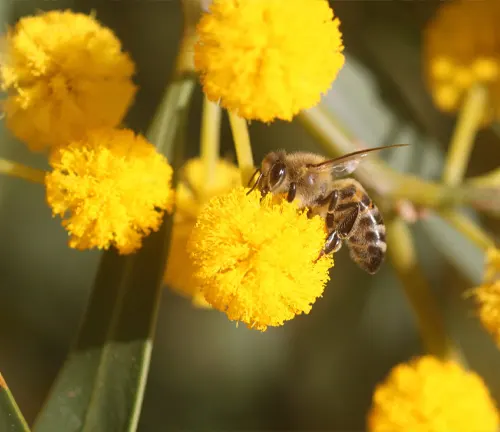
Ecological Importance
Beyond its visual allure, the Golden Wattle plays a crucial role in the ecological tapestry of its native habitat. Serving as a hub for biodiversity, it provides shelter and sustenance for a myriad of insects and birds. Its presence contributes to the delicate balance of the ecosystem, enhancing the overall health and resilience of the environment. In this way, the Golden Wattle stands not just as a symbol of beauty but as a cornerstone of Australia’s ecological vitality.
Cultivation and Conservation
Cultivating the Golden Wattle requires an understanding of its adaptability. Thriving in various soil types, from clay to sandy loam, this shrub has a remarkable ability to adapt to different environments. Conservation efforts focus on preserving its natural habitats, ensuring the continued existence of this iconic species. By promoting responsible cultivation practices and protecting its native ecosystems, conservationists work to safeguard the Golden Wattle for generations to come.
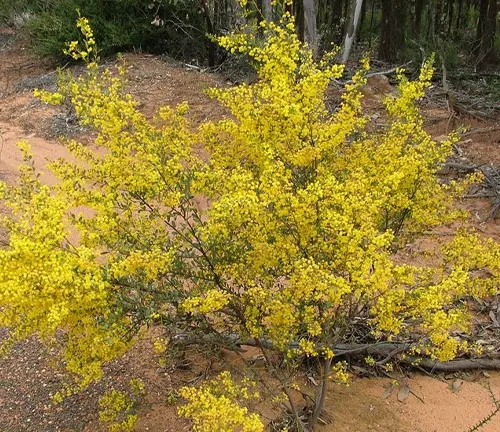
Fragrance
In addition to its visual appeal, the Golden Wattle enchants with its delicate fragrance. The golden blooms emit a subtle, sweet scent, creating a sensory experience that complements its visual splendor. This olfactory dimension adds another layer to the overall allure of the Golden Wattle, making it a sensory delight for those fortunate enough to encounter it in full bloom.
Soil Stabilization
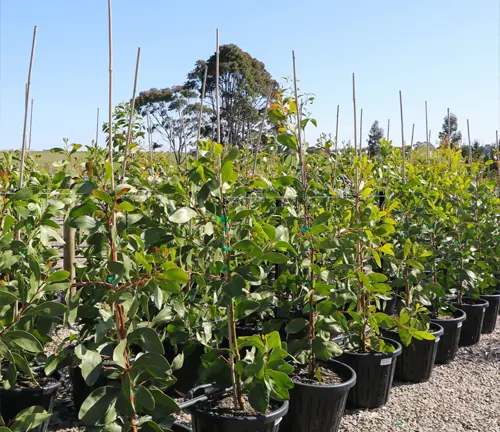
One of the unsung heroes of the plant kingdom, the Golden Wattle contributes significantly to soil stabilization. Its extensive root system helps prevent soil erosion, particularly in regions prone to degradation. By anchoring the soil and reducing the risk of erosion, this unassuming shrub plays a vital role in maintaining the structural integrity of the land it inhabits.
Common Uses
Indigenous Australians have long recognized the multifaceted utility of the Golden Wattle. Traditionally, various parts of the plant have been utilized for practical purposes. From crafting tools to deriving medicinal compounds and incorporating its seeds into culinary practices, the Golden Wattle embodies a harmonious relationship between nature and culture. Its historical and cultural significance is woven into the fabric of Australian heritage.
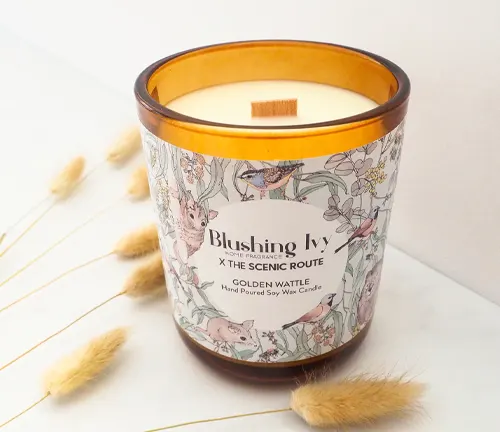
Benefits
The Golden Wattle offers a plethora of benefits, both cultural and environmental. As a symbol, it unites Australians under the banner of resilience and strength. Ecologically, it fosters biodiversity and aids in soil stabilization. Its adaptability to different soil types and climates makes it a valuable resource for sustainable cultivation. Beyond aesthetics, the Golden Wattle is a living testament to the interconnectedness of nature and human culture, embodying the spirit of Australia in its golden blossoms and thorny resilience.
Different Species
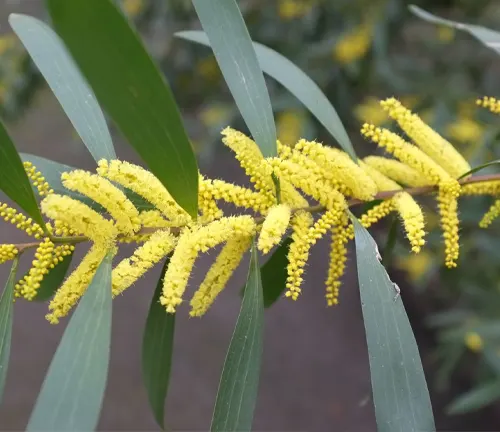
Acacia longifolia
(Sydney Golden Wattle)
Native to southeastern Australia, it is known for its long, willow-like leaves and bright yellow flowers.
Acacia baileyana
(Cootamundra Wattle)
Originating from southeastern Australia, this species features silvery, fern-like foliage and clusters of yellow, ball-shaped flowers.
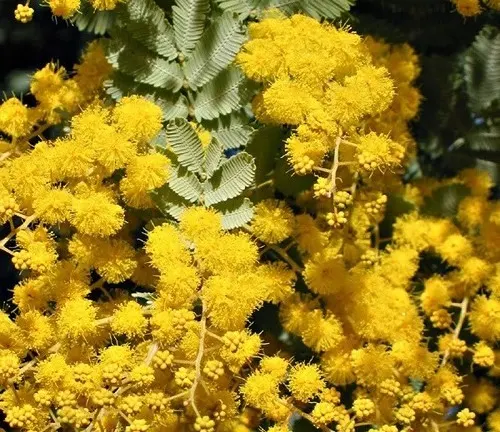
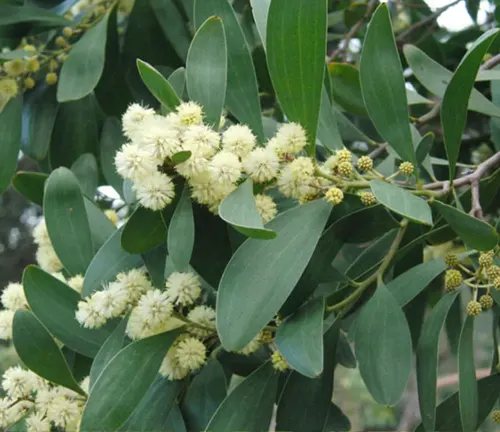
Acacia melanoxylon
(Blackwood)
Native to southeastern Australia, Blackwood is a larger tree species with dark, durable timber. It produces pale yellow flowers
Acacia dealbata
(Silver Wattle)
Hailing from southeastern Australia, Silver Wattle is recognized for its silvery-blue foliage and vibrant yellow flowers.
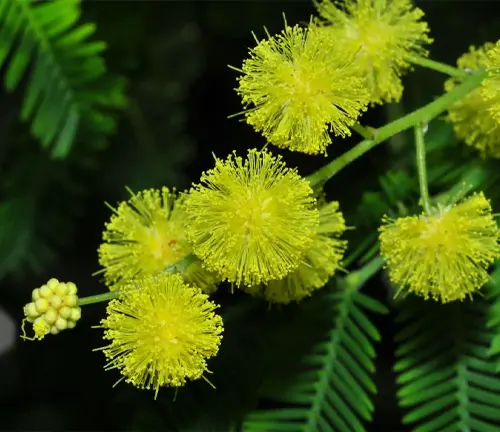
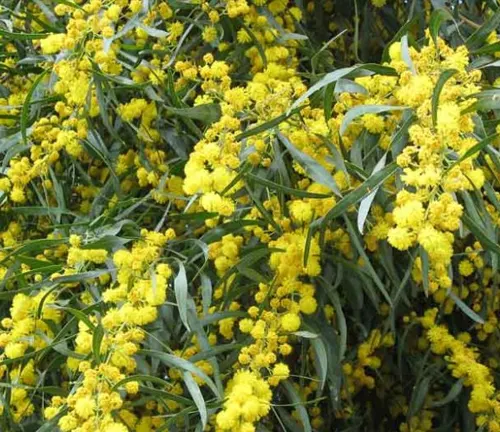
Acacia retinodes
(Swamp Wattle)
Native to southeastern Australia, it has narrow, willow-like leaves and produces golden-yellow flowers.
Acacia mearnsii
(Black Wattle)
Originally from southeastern Australia, Black Wattle is a fast-growing species with dark bark and spherical, yellow flower heads.
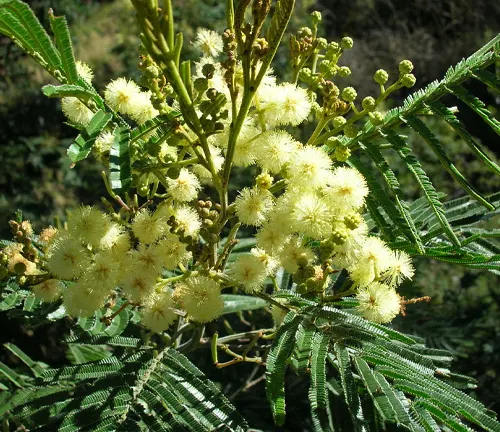
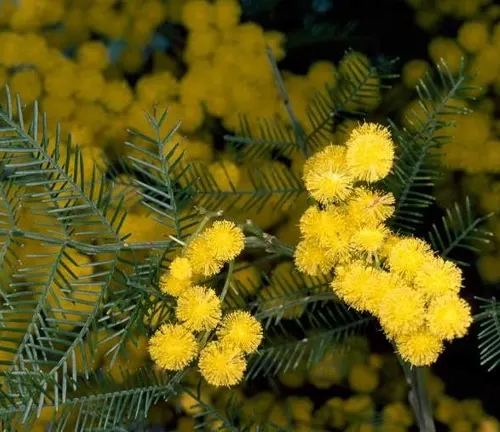
Acacia decurrens
(Green Wattle)
Native to southeastern Australia, Green Wattle is known for its finely divided, feathery leaves and pale yellow flower clusters.
Frequently Asked Questions (FAQs)
- What is Golden Wattle?
Golden Wattle (Acacia pycnantha) is Australia’s national floral emblem, known for its vibrant golden-yellow blossoms and feathery foliage. It symbolizes unity and resilience. - Where is Golden Wattle found?
Golden Wattle is native to the southeastern regions of Australia. It thrives in various soil types, from clay to sandy loam. - When does Golden Wattle bloom?
Golden Wattle typically blooms in late winter to early spring, creating a spectacular display of golden-yellow flowers. - What is the significance of Golden Wattle?
Apart from being a national symbol, Golden Wattle holds cultural importance. It has been traditionally used by Indigenous Australians for food, medicine, and tools. - How tall does Golden Wattle grow?
Golden Wattle is a medium-sized shrub, ranging from 2 to 8 meters in height, depending on the specific conditions of its environment. - Can Golden Wattle adapt to different soil types?
Yes, Golden Wattle is adaptable and can thrive in various soil types, making it well-suited for different environments. - Is Golden Wattle fragrant?
Yes, Golden Wattle has a delicate fragrance, adding to its overall appeal. The golden blooms emit a subtle, sweet scent. - What ecological role does Golden Wattle play?
Golden Wattle supports biodiversity by providing habitat for insects and birds. Its root system also contributes to soil stabilization, preventing erosion. - Are there different species of Golden Wattle?
While Acacia pycnantha is the official Golden Wattle, the term is sometimes used for other Acacia species with similar characteristics, such as Acacia longifolia and Acacia baileyana. - How is Golden Wattle conserved?
Conservation efforts focus on preserving the natural habitats of Golden Wattle and promoting sustainable cultivation practices to ensure its continued existence. - What are the common uses of Golden Wattle?
Indigenous Australians historically used various parts of the Golden Wattle for tools, food, and medicine. Today, it holds cultural significance, and conservationists promote its ecological benefits. - Is Golden Wattle invasive?
While some Acacia species can become invasive in certain environments, proper cultivation and conservation practices help manage and mitigate any potential issues.




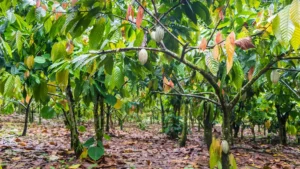
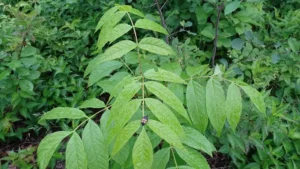
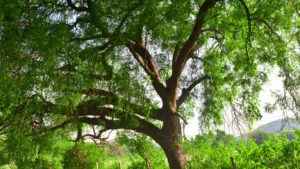
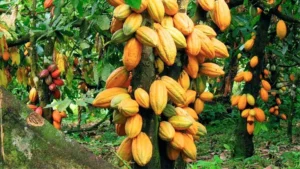



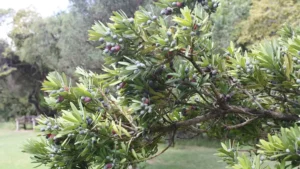
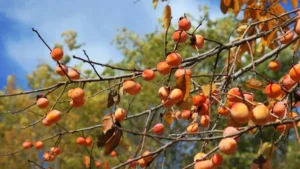
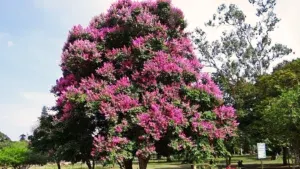
Leave your comment